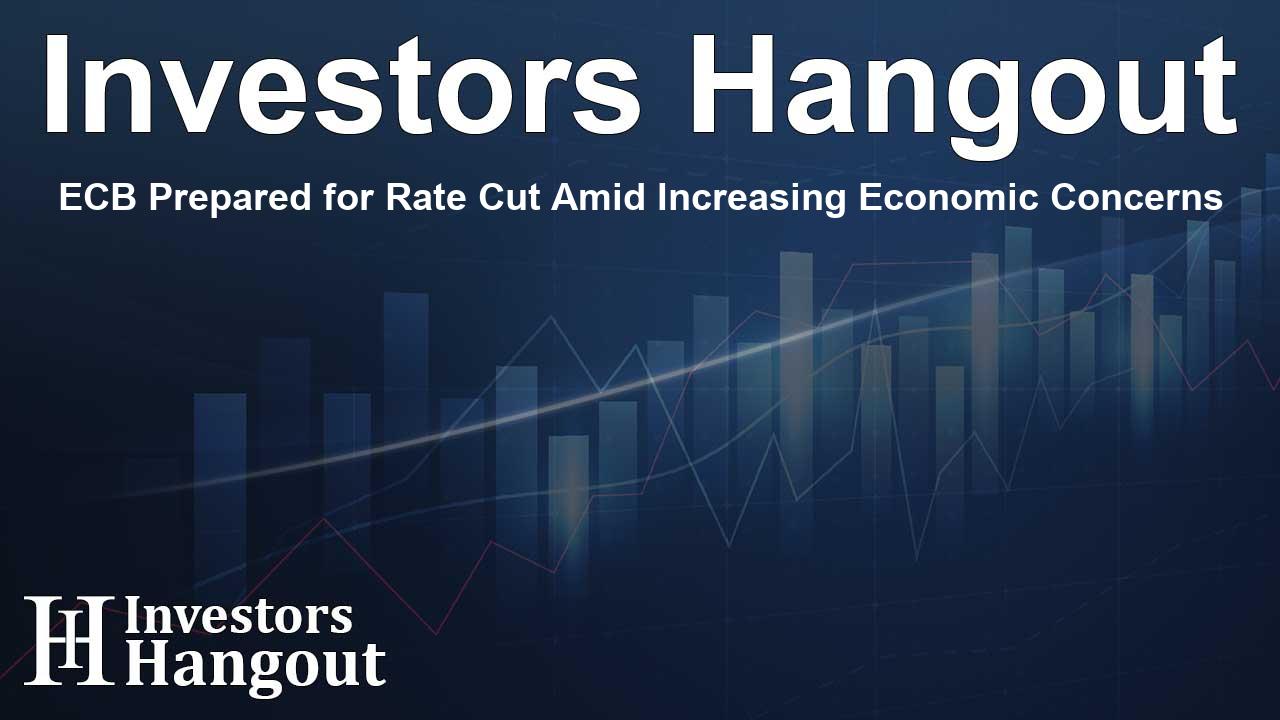ECB Prepared for Rate Cut Amid Increasing Economic Concerns

ECB's Anticipated Rate Cut and Economic Outlook
As the European Central Bank (ECB) reviews its monetary policy, the potential for a 25 basis point cut is becoming increasingly apparent. Although many analysts predict this move, the meeting on September 12 may not see unanimous agreement among policymakers. Hawkish members remain cautious, emphasizing the need for sturdy economic evidence before any further rate cuts.
According to Annalisa Piazza, a Fixed Income Research Analyst at MFS Investment Management, the ECB's decision to cut rates is expected due to a combination of faltering economic signs and inflation projections. The revised outlook indicates inflation is on track to stabilize by the latter half of 2025. The markets have largely factored in this anticipated cut, establishing current rates around 2.25% with a gradual easing path in sight.
Factors Influencing ECB's Decisions
The upcoming ECB press conference will focus on two vital areas: the assessment of growth risks and the resolve of hawkish members. Previous minutes highlighted strong concerns regarding economic downturns, raising questions about the ECB's readiness to adopt a more flexible stance.
There is also a rising issue of disinflation driven by reduced demand. The ECB's continued strict approach may be under scrutiny, especially as the economy does not meet the expectations for swift recovery tied to consumer demand. Observers speculate that a more data-dependent approach could emerge, particularly in October, pending further insights into the service sector's inflation dynamics.
Expectations and Future Path of Monetary Policy
Tomasz Wieladek, Chief European Economist at T. Rowe Price, asserts that a 25 basis point cut this week is broadly anticipated, reflective of weaker economic indicators that signal impending adjustments in monetary policy. Investors are particularly keen to discover any hints regarding the future trajectory of these cuts.
The central bank faces a balancing act, with pressing need for clarity amidst shaky economic data. As the inflation rate in the Eurozone remains persistently above 4%, a sustained tight labor market continues to maintain upward pressures on wage negotiations. Projections suggest wages may rise again in the upcoming quarters.
Market Reactions and Broader Economic Implications
In light of these conditions, market expectations indicate a significant reduction possibility across other major banks as well. Observers foresee the ECB to join others like the Fed in a downward trend regarding interest rates, raising discussions on the speed and volume of these cuts.
While growth has been stagnating in Europe, market pressures remain as the European Commission prompts governments to tighten fiscal policies. The current data suggests a cautious approach from the ECB in the immediate future as it prepares for its next policy decisions.
Strategy Review on Monetary Policy
Looking ahead, ECB officials are set to engage in a broader assessment of monetary strategies. The focus will address crucial questions about the overall structure of future debt purchase programs and how similar measures should evolve in response to fluctuating inflation rates.
The debate encompasses vital considerations about the introduction of guidelines for future interventions to curtail significant inflation shocks, essentially forming a foundational aspect of the ECB's strategic policy framework. This encompasses grappling with identifying a neutral interest rate that neither stimulates nor restricts growth, a challenge that remains nuanced and complex.
Frequently Asked Questions
What should we expect from the ECB in September regarding interest rates?
Many analysts predict a 25 basis point cut in interest rates at the September meeting, following concerns about economic growth and inflation rates.
How are current economic conditions impacting ECB's decisions?
Persistent wage inflation and slow economic growth are key factors influencing the ECB’s cautious approach. Policymakers are watching data trends closely before making further commitments.
What are the broader implications of the ECB's expected rate cuts?
The anticipated cuts signal a shift in monetary policy that could ripple through the financial markets, influencing borrowing costs and investment decisions across Europe.
How does the ECB’s stance compare with other central banks?
Similar movements are observed among other central banks like the Fed, signaling a global shift towards easing monetary policies in response to economic challenges.
Why is the evaluation of a neutral interest rate crucial for the ECB?
Understanding where the neutral interest rate lies helps the ECB formulate policies that effectively stimulate growth without fuelling inflation or unnecessarily hindering economic recovery.
About Investors Hangout
Investors Hangout is a leading online stock forum for financial discussion and learning, offering a wide range of free tools and resources. It draws in traders of all levels, who exchange market knowledge, investigate trading tactics, and keep an eye on industry developments in real time. Featuring financial articles, stock message boards, quotes, charts, company profiles, and live news updates. Through cooperative learning and a wealth of informational resources, it helps users from novices creating their first portfolios to experts honing their techniques. Join Investors Hangout today: https://investorshangout.com/
Disclaimer: The content of this article is solely for general informational purposes only; it does not represent legal, financial, or investment advice. Investors Hangout does not offer financial advice; the author is not a licensed financial advisor. Consult a qualified advisor before making any financial or investment decisions based on this article. The author's interpretation of publicly available data shapes the opinions presented here; as a result, they should not be taken as advice to purchase, sell, or hold any securities mentioned or any other investments. The author does not guarantee the accuracy, completeness, or timeliness of any material, providing it "as is." Information and market conditions may change; past performance is not indicative of future outcomes. If any of the material offered here is inaccurate, please contact us for corrections.